It stands to reason that the Europalia India arts festival should have a substantial film element. India has had and still has today a great film culture. With about 1,300 films a year, India leaves every other film industry, including Hollywood’s, in the halfpenny place. And they are certainly not all saccharine films in all the colours of the rainbow with at least ten song-and-dance numbers and a far-fetched happy ending.
INDIAN INDIES
Forget all your preconceptions about Bollywood escapism: for ten years now, Anurag Kashyap has been willing to take on any taboo going in his dark contemporary films. In Black Friday, back in 2004, he tackled a subject that his colleagues and their stars had avoided in thousands of films over the previous ten years: the bomb attacks that killed 260 people on 12 March 1993 in Mumbai (then still known as Bombay).
Indian cinema: beyond Bollywood
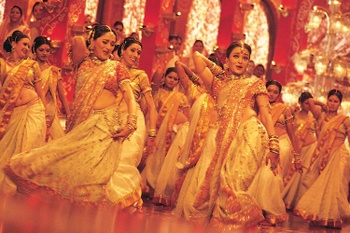
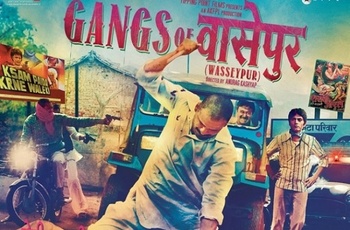
It was another few years before the film could be shown in India. Its premiere at the Locarno festival made Kashyap’s name and he went on to make a whole succession of films as the unflinching leader of a growing group of independent directors with a very different outlook on India and cinema. He led by example, but also by helping others to get started, as a screenwriter and producer. His international breakthrough came with the two-part Gangs of Wasseypur (2012), the Indian equivalent of Goodfellas or the Godfather trilogy – except that it looks at two rival gangster families, the Khans and the Qureshis. No sign of kitsch, anywhere you look, but plenty of drama, blood, violence, megalomania, exploitation, corruption, vengeance, and out-of-the-question love stories. Kashyap will be in Brussels for the previews of Gangs of Wasseypur (21/10, Flagey) and Ugly (8/10, Flagey). Flagey will be presenting his earlier work (9 > 17/10) and Kashyap has also made a selection of three other independent Indian films for the Cinematek (9 > 26/10).
Anurag Kashyap 8 > 26/10, Cinematek, www.cinematek.be & Flagey, www.flagey.be
INDIAN WELLES
I once asked a British-Indian colleague in Cannes which other Indian director he would recommend alongside the unsurpassed Satyajit Ray. His answer came without even a second’s hesitation: Guru Dutt.
Anurag Kashyap 8 > 26/10, Cinematek, www.cinematek.be & Flagey, www.flagey.be
INDIAN WELLES
I once asked a British-Indian colleague in Cannes which other Indian director he would recommend alongside the unsurpassed Satyajit Ray. His answer came without even a second’s hesitation: Guru Dutt.
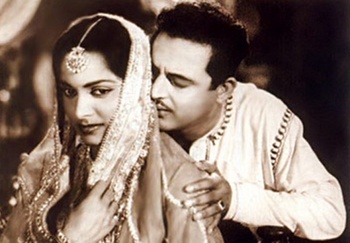
(Pyaasa)
The man who has been called the Indian Orson Welles has won praise for his impressionistic cinematography and lyrical dialogue and for the determination with which he tried to smuggle more darkness and personality into popular Hindi cinema. He denounced the hypocrisy and the social mores that make life harder for outsiders and the less well-off. His most widely praised films are Pyaasa (Eternal Thirst, 1957), about a penniless poet in a dreary Calcutta and Kaagaz Ke Phool (Paper Flowers, 1959), about a film director who comes to grief as his muse becomes a great film star. India didn’t care for his films and recognition only came his way after his death, by his own hand, in 1964.
Retrospective Guru Dutt 1 > 23/11, Cinematek, www.cinematek
BOLLYFOOD AND DRINKS
For the occasion of a multidisciplinary focus on Indian film, Flagey is being renamed Flageywood.
The man who has been called the Indian Orson Welles has won praise for his impressionistic cinematography and lyrical dialogue and for the determination with which he tried to smuggle more darkness and personality into popular Hindi cinema. He denounced the hypocrisy and the social mores that make life harder for outsiders and the less well-off. His most widely praised films are Pyaasa (Eternal Thirst, 1957), about a penniless poet in a dreary Calcutta and Kaagaz Ke Phool (Paper Flowers, 1959), about a film director who comes to grief as his muse becomes a great film star. India didn’t care for his films and recognition only came his way after his death, by his own hand, in 1964.
Retrospective Guru Dutt 1 > 23/11, Cinematek, www.cinematek
BOLLYFOOD AND DRINKS
For the occasion of a multidisciplinary focus on Indian film, Flagey is being renamed Flageywood.
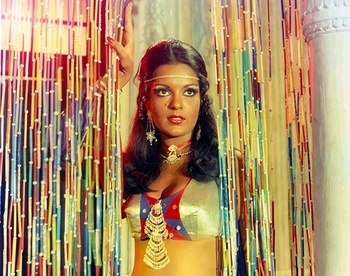
Anurag Kashyap is at the heart of the event. But it also includes The Fourth Wall (8 > 26/10), a series of photographs by Max Pinckers, a young Belgian whose colourful pictures reveal his fascination with the enormous influence Bollywood has on everyday life in India. On 26 October there will be a Flageywood Day, with henna and dance workshops, a typical Indian dinner, and a closing party with DJ Edo Bouman – a Dutch DJ who is a great collector of Bollywood music and runs the Bombay Connection Records label. His label caused quite a stir with its re-release of an acid house album by the forgotten genius Charanjit Singh.
Flageywood Day 26/10, Flagey, www.flagey.be
HAPPY CENTENARY!
India this year celebrates the first century of its film industry and Flagey is joining in the celebrations by reviving a number of classics. Raj Kapoor’s Awaara (1951) is one of the most popular Indian films of the 1950s. Muzzafar Ali’s Umrao Jaan (1981) is a colourful Bollywood film.
Flageywood Day 26/10, Flagey, www.flagey.be
HAPPY CENTENARY!
India this year celebrates the first century of its film industry and Flagey is joining in the celebrations by reviving a number of classics. Raj Kapoor’s Awaara (1951) is one of the most popular Indian films of the 1950s. Muzzafar Ali’s Umrao Jaan (1981) is a colourful Bollywood film.
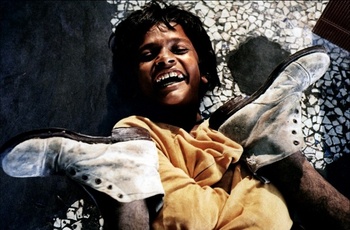
(Salaam Bombay!)
Salaam Bombay! (1988) tells the story of a young boy’s struggle to survive on the streets of Bombay, in an environment of desperate poverty, exploitation, prostitution, and drug addiction. Following that debut, Mira Nair developed into an internationally respected director. Bizarrely, Satyajit Ray is hardly represented at all in the film programming. We have to make do with Jalsaghar (The Music Room, 1958), a tale about an old aristocrat set in the late 1920s. The old man, who distrusts progress, organises one last concert in his run-down country mansion. “Not having seen Ray’s cinema is like walking around on earth without ever having seen the sun or the moon,” according to Akira Kurosawa.
100 years of Indian cinema Flagey, www.flagey.be
EUROPALIA INDIA • 4/10 > 26/1, Verschillende locaties/Divers lieux/Various venues, info point: rue Ravensteinstraat 79, Brussel/Bruxelles, 02-540.80.80, www.europalia.eu
Salaam Bombay! (1988) tells the story of a young boy’s struggle to survive on the streets of Bombay, in an environment of desperate poverty, exploitation, prostitution, and drug addiction. Following that debut, Mira Nair developed into an internationally respected director. Bizarrely, Satyajit Ray is hardly represented at all in the film programming. We have to make do with Jalsaghar (The Music Room, 1958), a tale about an old aristocrat set in the late 1920s. The old man, who distrusts progress, organises one last concert in his run-down country mansion. “Not having seen Ray’s cinema is like walking around on earth without ever having seen the sun or the moon,” according to Akira Kurosawa.
100 years of Indian cinema Flagey, www.flagey.be
EUROPALIA INDIA • 4/10 > 26/1, Verschillende locaties/Divers lieux/Various venues, info point: rue Ravensteinstraat 79, Brussel/Bruxelles, 02-540.80.80, www.europalia.eu
Read more about: Events & Festivals , Film
Fijn dat je wil reageren. Wie reageert, gaat akkoord met onze huisregels. Hoe reageren via Disqus? Een woordje uitleg.